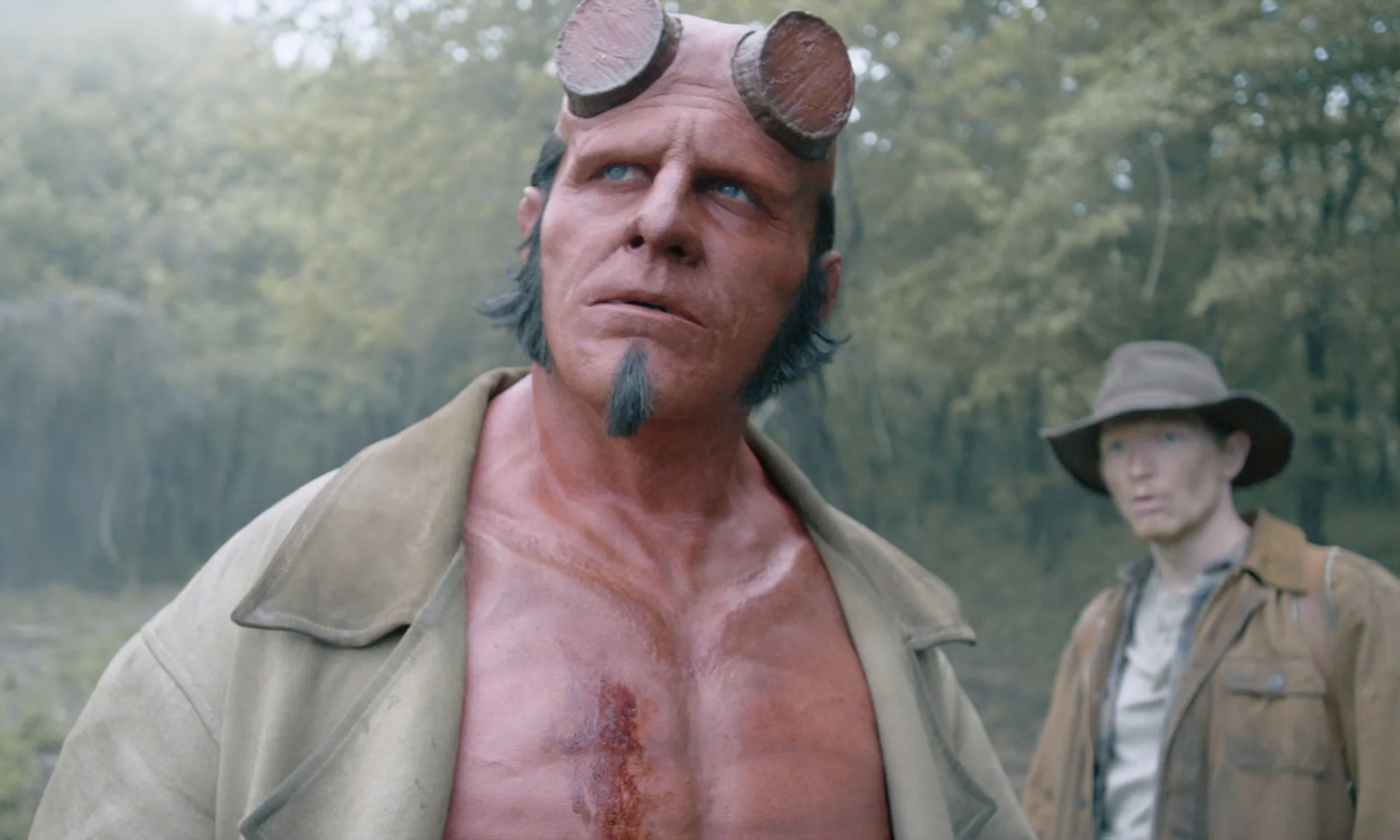HELLBOY: THE CROOKED MAN
***
Directed by Brian Taylor.
Starring Jack Kesy, Jefferson White, Adeline Rudolph.
Horror, US, 99 minutes, Certificate 15.
Released in cinemas in the UK on 27th September by Icon
Big Red returns to the screen once again, this time in a pared down, back to basics ghost story that sticks closer to Mike Mignola’s comic book than any of the previous adaptations. While Guillermo Del Toro’s two original films have their fans, who were dismayed at the shelving of the anticipated third entry that would see Ron Perlman’s much loved take on the character becoming a father, Mignola was reportedly less than happy with this whimsical direction that diverged from his then uncompleted and far darker storyline. However, Neil Marshall’s maligned 2019 reboot seemed to go too far the other way with David Harbour’s portrayal, however well intentioned, lost in an overstuffed plot and tone that felt more at odds with Mignola’s grand gothic stylings.
With its lower budget, this new entry is allowed to go back to the characters roots with this adaptation of a self contained, fan-favourite story. Director and co-writer Brian Taylor, along with Mignola himself and his regular collaborator, the horror author Christopher Golden, get stuck into things immediately launching into its 1959 set story that feels no need to reintroduce Hellboy and his demonic backstory to any newcomers. Jack Kesy takes on the full-body make-up, CGI tail, and sawn off horns of the titular character as he wanders through the Appalachian mountains after losing possession of a demonic spider. Accompanied by fellow BPRD officer Bobbie Jo Song, they soon stumble across the victim of a supposed witch. Enter Tom Ferrell, a local who has returned to the area after years away with a personal history with this beguiling witch cahoots with The Crooked Man. As the spectres and their unearthly allies attack Hellboy and his cohorts, Hellboy also begins to piece together his own mysterious origins.
While it may lack the budget and scope of its predecessors this manages to impress in its own way. Taylor fully delves into the pulp influences of the character, Lovecraft is namechecked at one point, while the first half of the film looks into Appalachian legends and superstitions that the film comes across as an American folk horror more than a straight ahead comic adaptation. Taylor does make time however to channel the haunting visuals that often made the original comic stand out from the usual superhero monthlies it shared shelf space with. The Crooked Man himself looks like he stepped straight off the page with a design that brings the illustrations of the original stories comic book artist Richard Corben to unnerving life with his lopsided neck and rictus grin.
Mignola’s own illustrations are also channelled onto the screen in an impressive style; Hellboy’s encounter with a certain demonic figure from his past being a prime example that captures the dark and often spare stylings of the creator that made his name. Fans of the comics will be impressed with this entry while there is enough here of interest for the uninitiated to hold their attention.
Towards the end the plot stretches out into an action set piece that the budget can not support. It ignores the deft and graceful storytelling of its source material in favour of people running away from, shouting and shooting at various monsters in dark spaces. Such incomprehension is sadly not limited to these closing scenes. With the ever present, and tax and budget friendly Eastern Europe standing in for the Appalachian mountains we are also treated to a number of English actresses wrangling the Southern dialect into near incomprehensible sounds that it's hard not to get lost in it all.
Longtime fans will feel sated with this respectful adaptation, while newcomers or those left cold by the previous adaptations, may find something within its own offbeat nature that sings to them. While it's hard to see this particular entry stretching out into a franchise in its own right, there is enough on offer here to ensure that it becomes more than an obscure footnote in the characters' varied history both on the page and on screen.
Iain MacLeod

